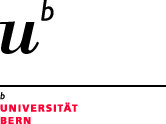E-learning
The Department for Education and Media (AUM) supports medical education in a multitude of ways through the use of digital media. In collaboration with lecturers from the Medical Faculty, it produces interactive learning programmes for self-study. These can be accessed via the E-learning directory.
A range of AUM learning media can be purchased from us (IML-Shop):
The learning programmes place great emphasis on image-rich contents such as anatomy, histology, haematology or radiology. The interactive processing of the images provides optimal support for developing pattern recognition. For the teaching in histology and histopathology, a virtual microscope is provided. Additionally, users can apply what they have learned in the clinical context using interactive case examples. Clinical skills and behaviours are demonstrated through videos.
The AUM provides third parties with access to its development environment for the production of their own online learning programmes (Vetsuisse Bern, University Hospital Zurich). In collaboration with other institutions, the AUM produces online learning environments (DocCom.Deutsch).
Videos
Over the last few years, the use of videos in teaching has increased strongly. Videos are particularly suitable for demonstrating skills both of a technical and social nature.
Videos are also used for the training of simulated/standardized patients in order to unify role play for the Federal licensing examination. The AUM produces these training videos on behalf of the Federal Office of Public Health, thus contributing to quality assurance of the Clinical Skills examination.
On the learning platform DocCom.Deutsch, videos play an important role in the provision of role models.
Podcasts
A further focus in the use of video is the recording of lectures in the clinical years of the medical degree (study years 3 to 6). These podcasts, also called PodLectures, are generally available the same day.
The PodLectures consist of the projected presentation and the speech of the lecturers. Through the provision of Audience-Response-Systems (ARS), the AUM enhances the interactive implementation of lectures and other face-to-face events.
Individual Video Training
The communication training with standardized/simulated patients is specifically enhanced through the recording of conversations and subsequent feedback. Opencast is used as the recording system. Students start the video recordings by entering their Edu-ID login. This connection between the login and the recording enables the individualized provision of conversation videos in the University of Bern's Learning Management System (ILIAS). Furthermore, the recordings are also used for quality assurance of the role-playing as well as for optimizing the feedback process of standardized/simulated patients.

